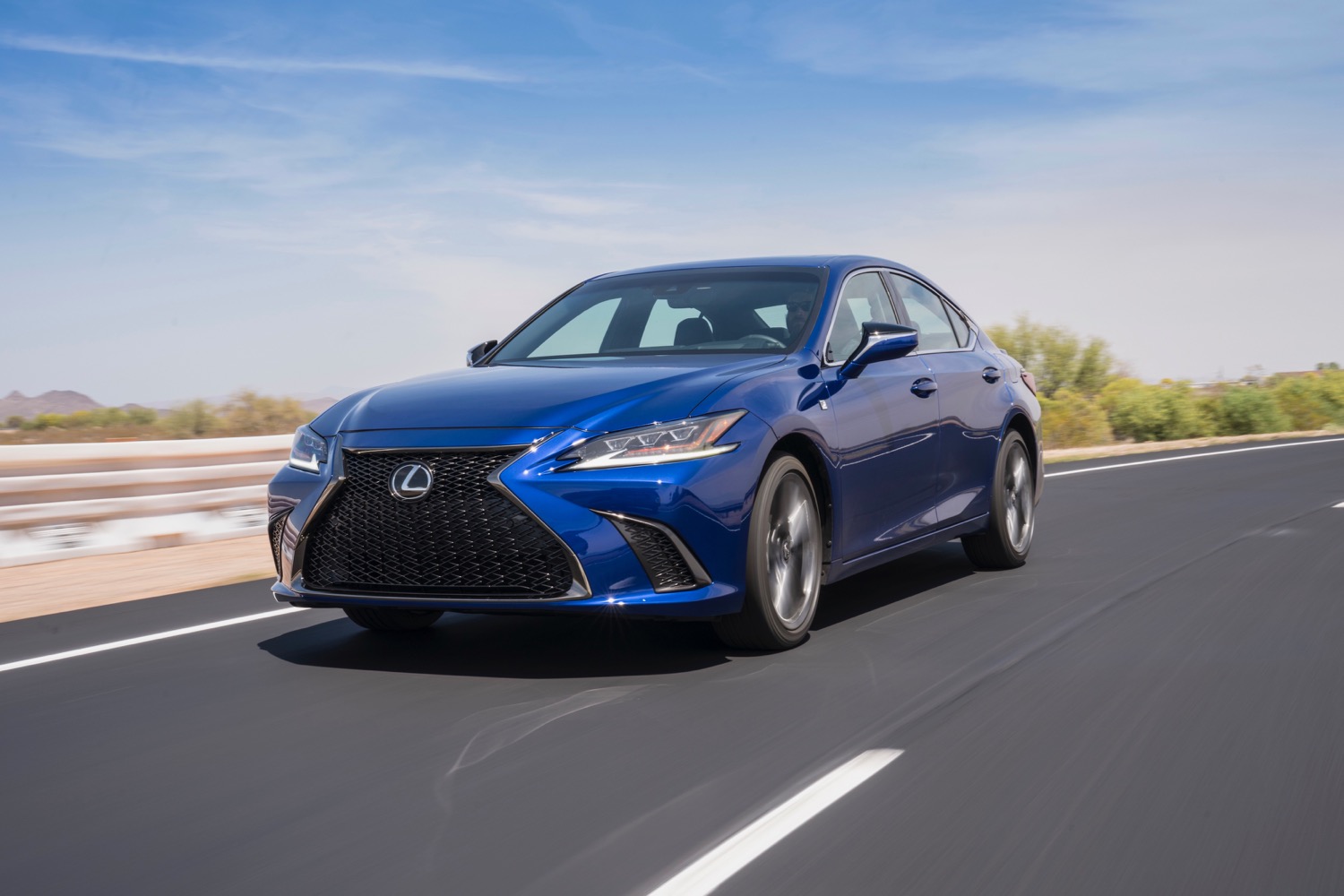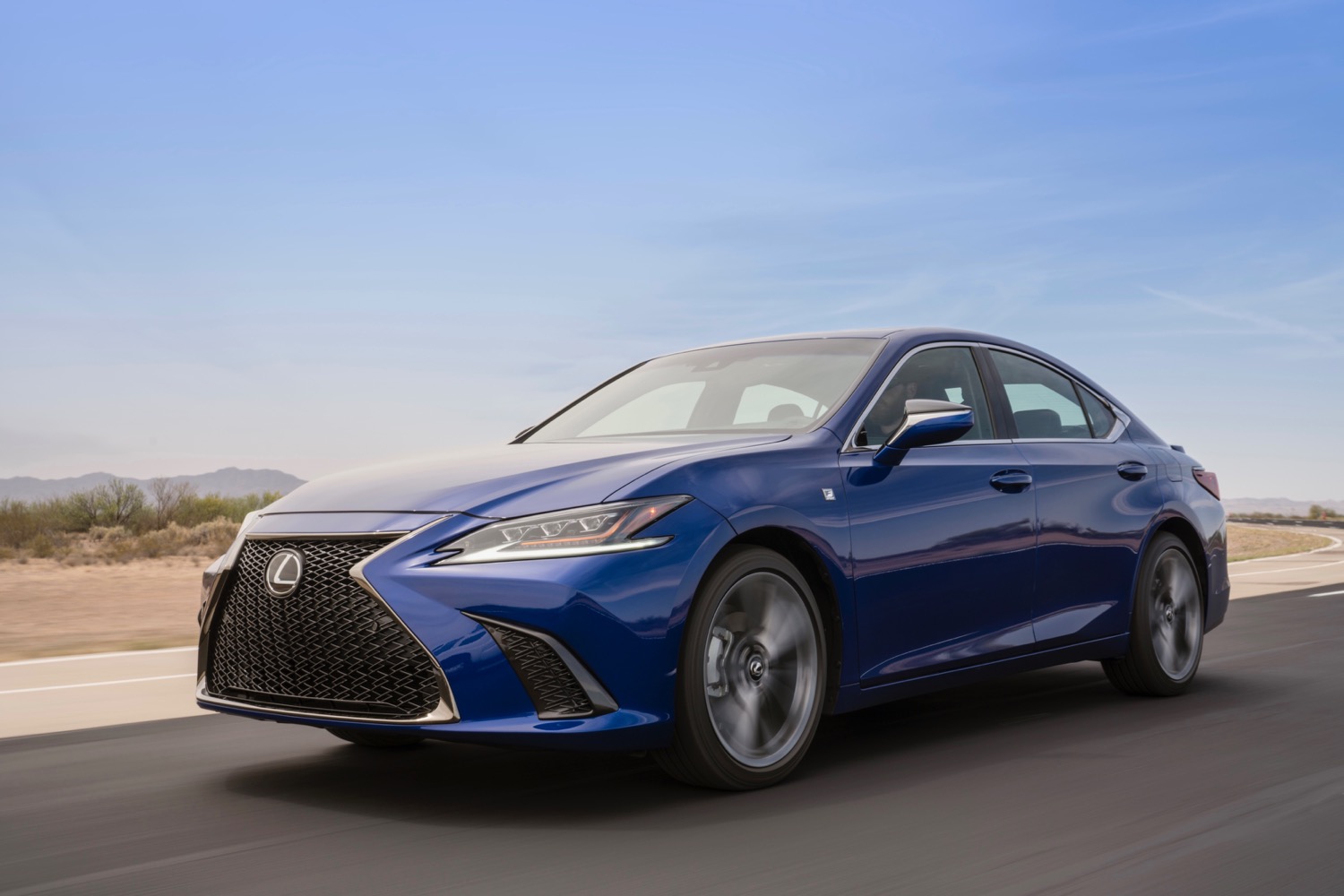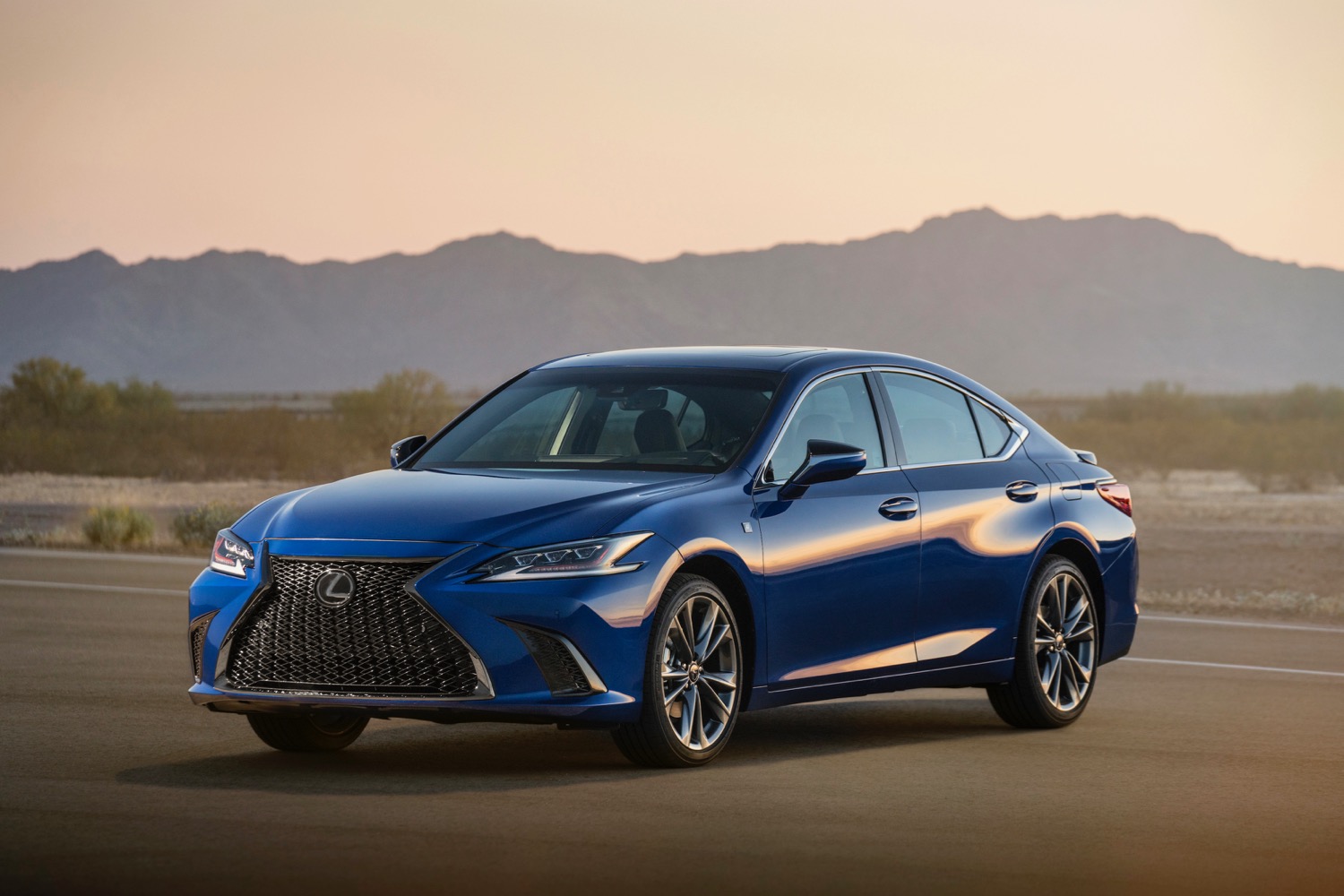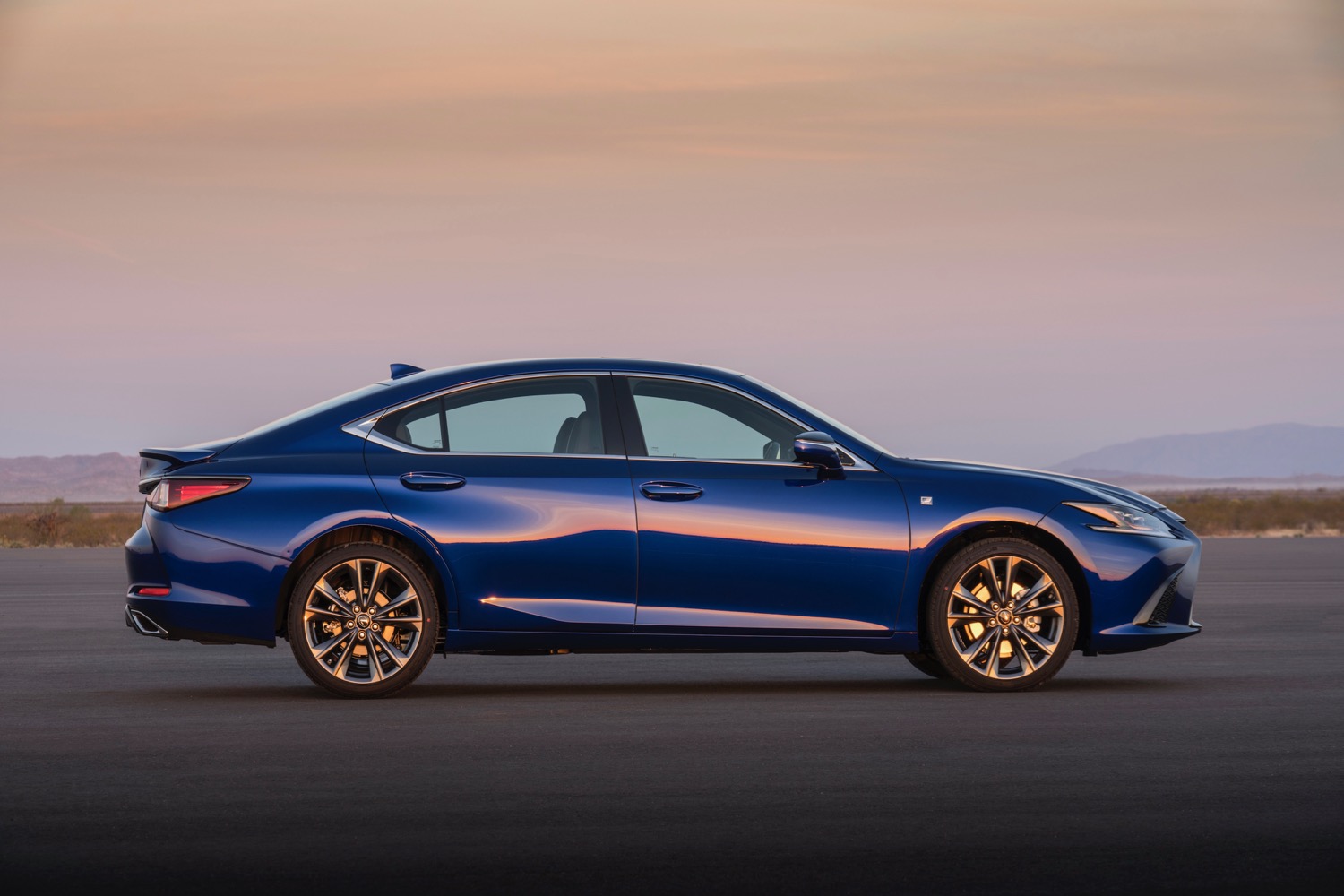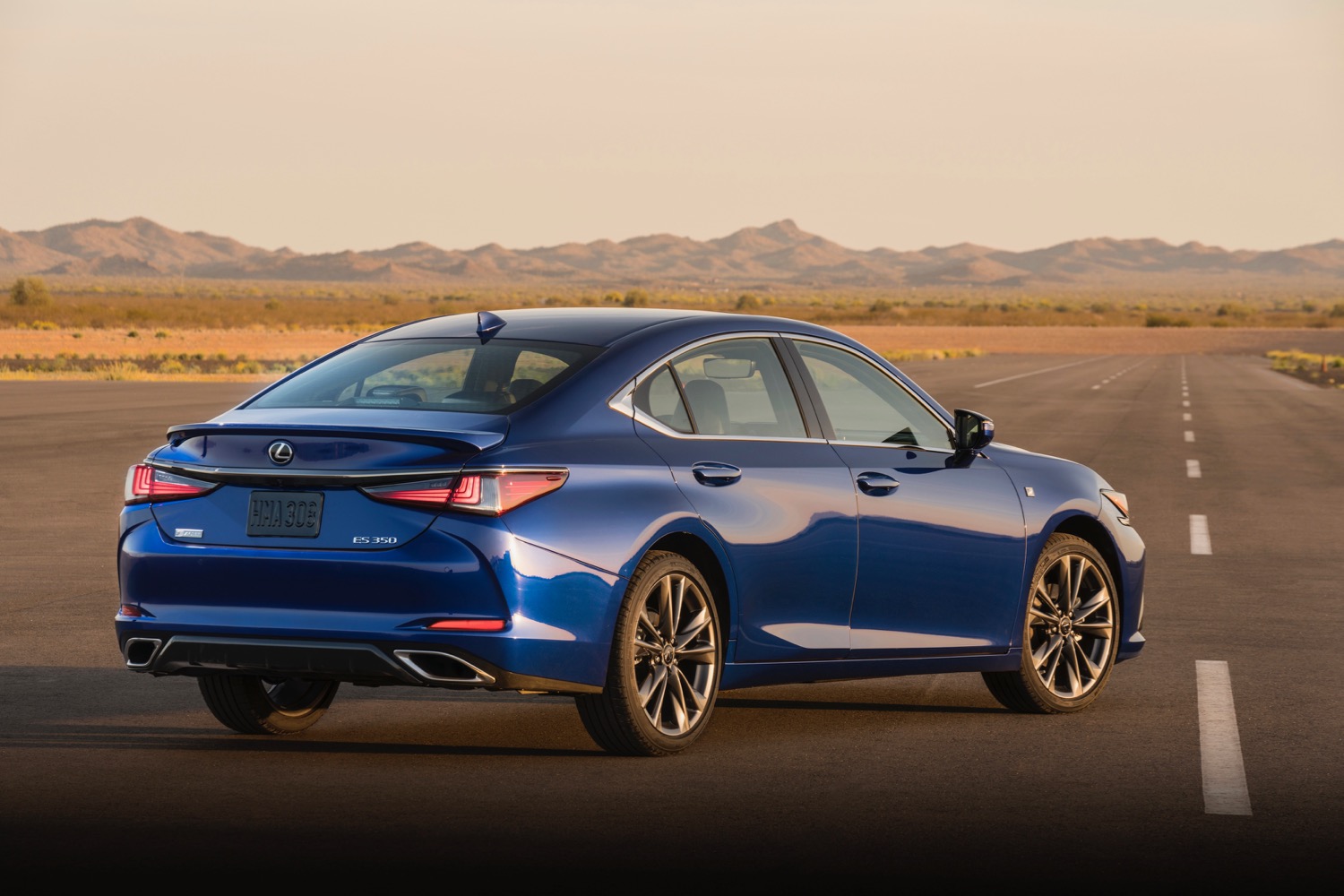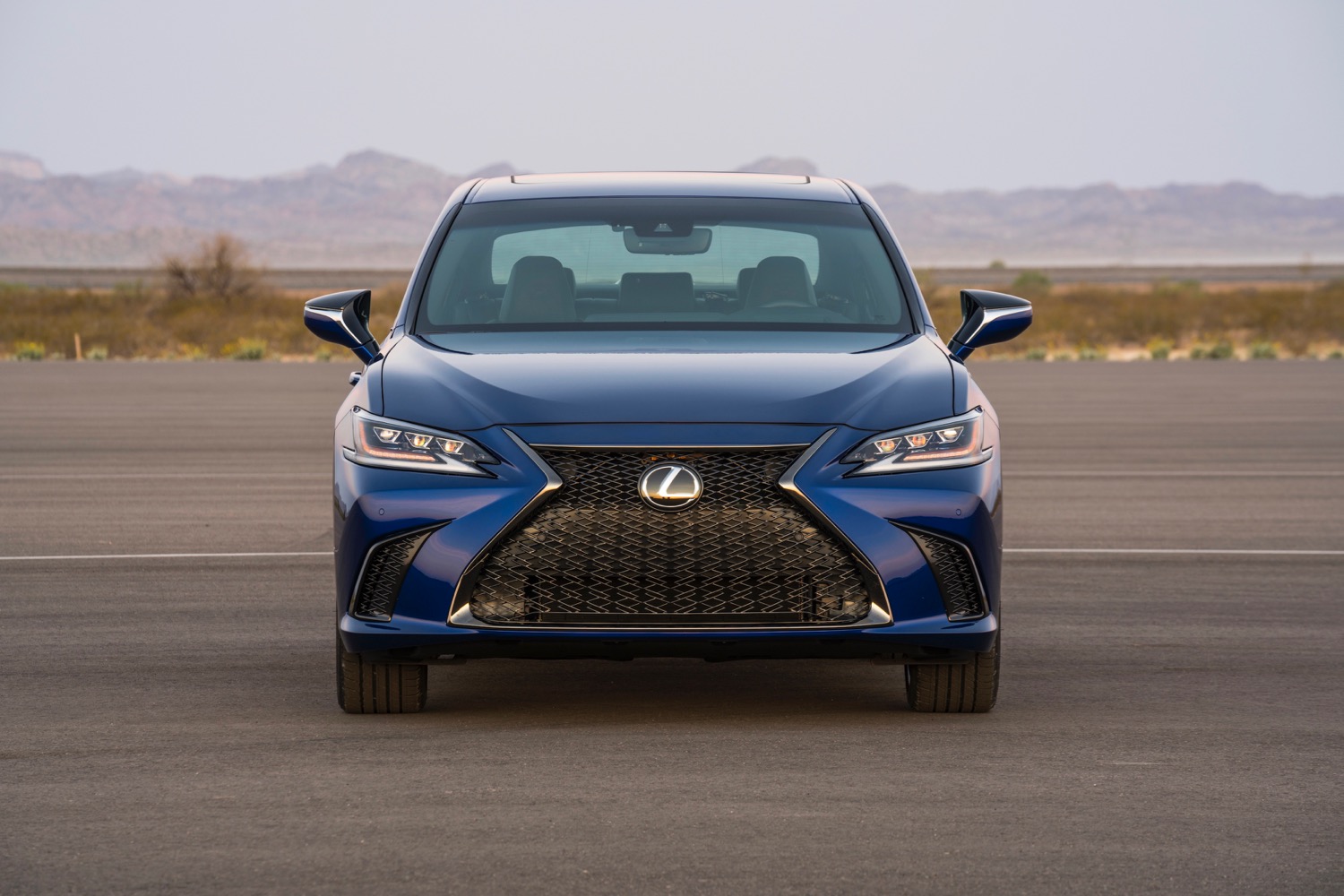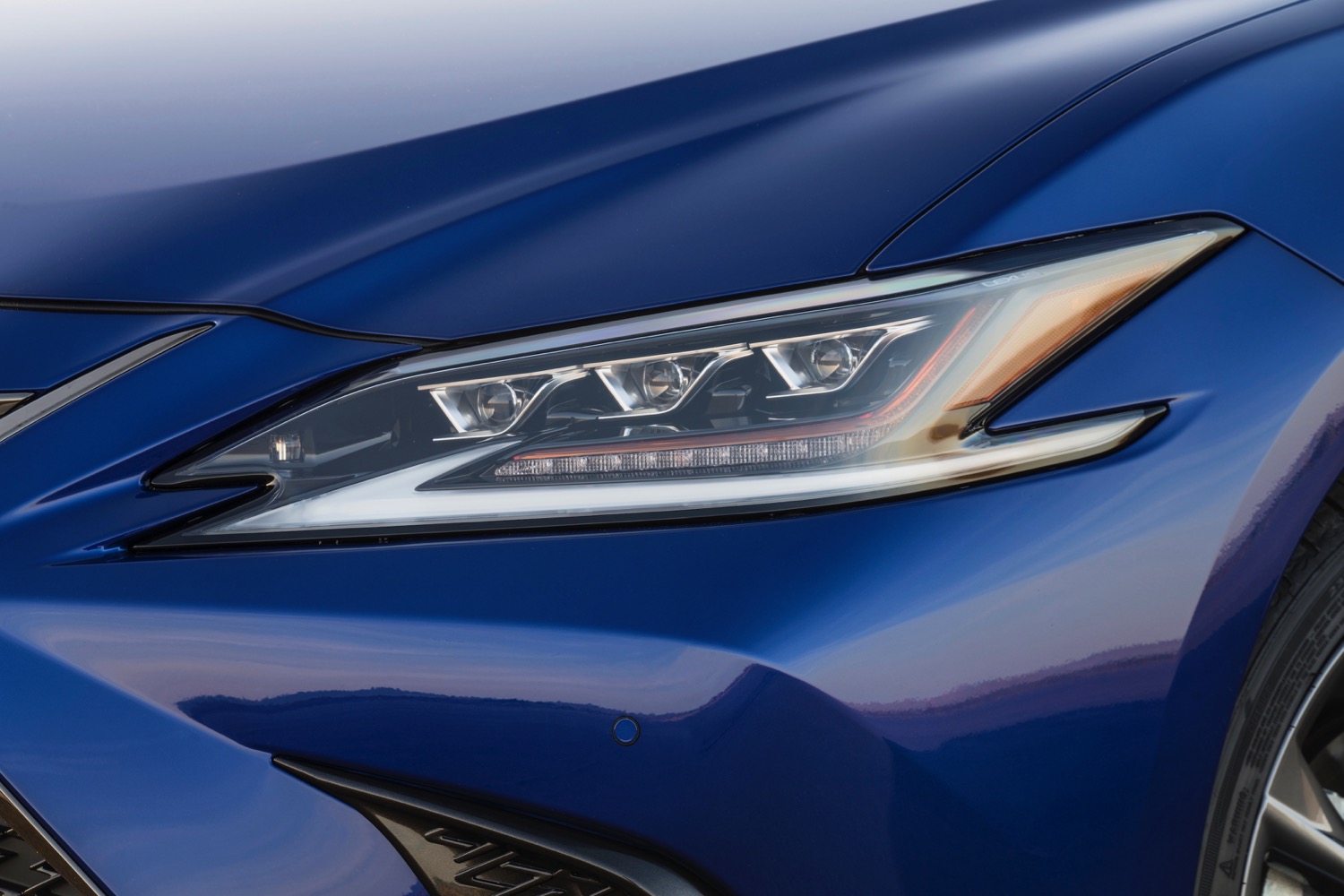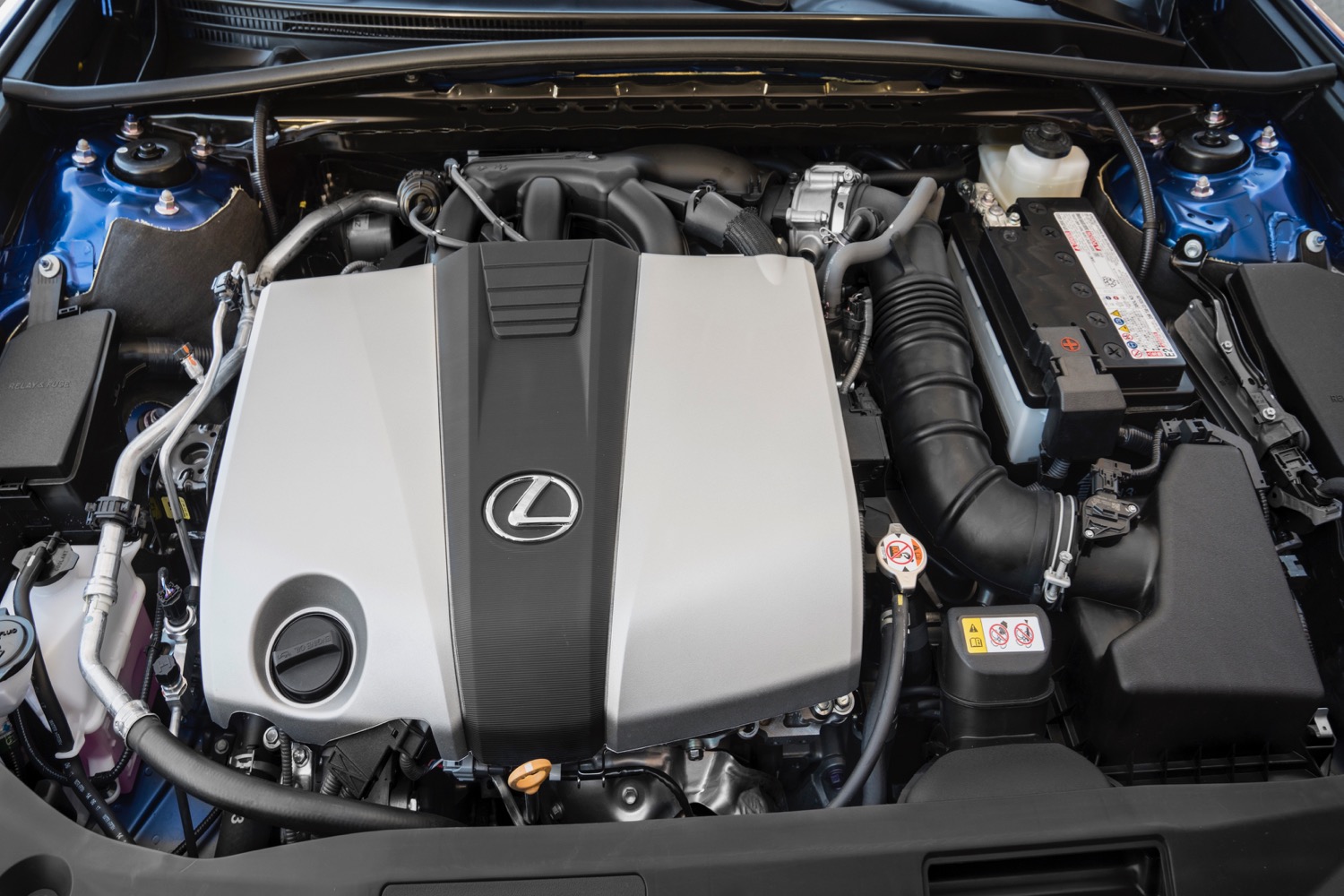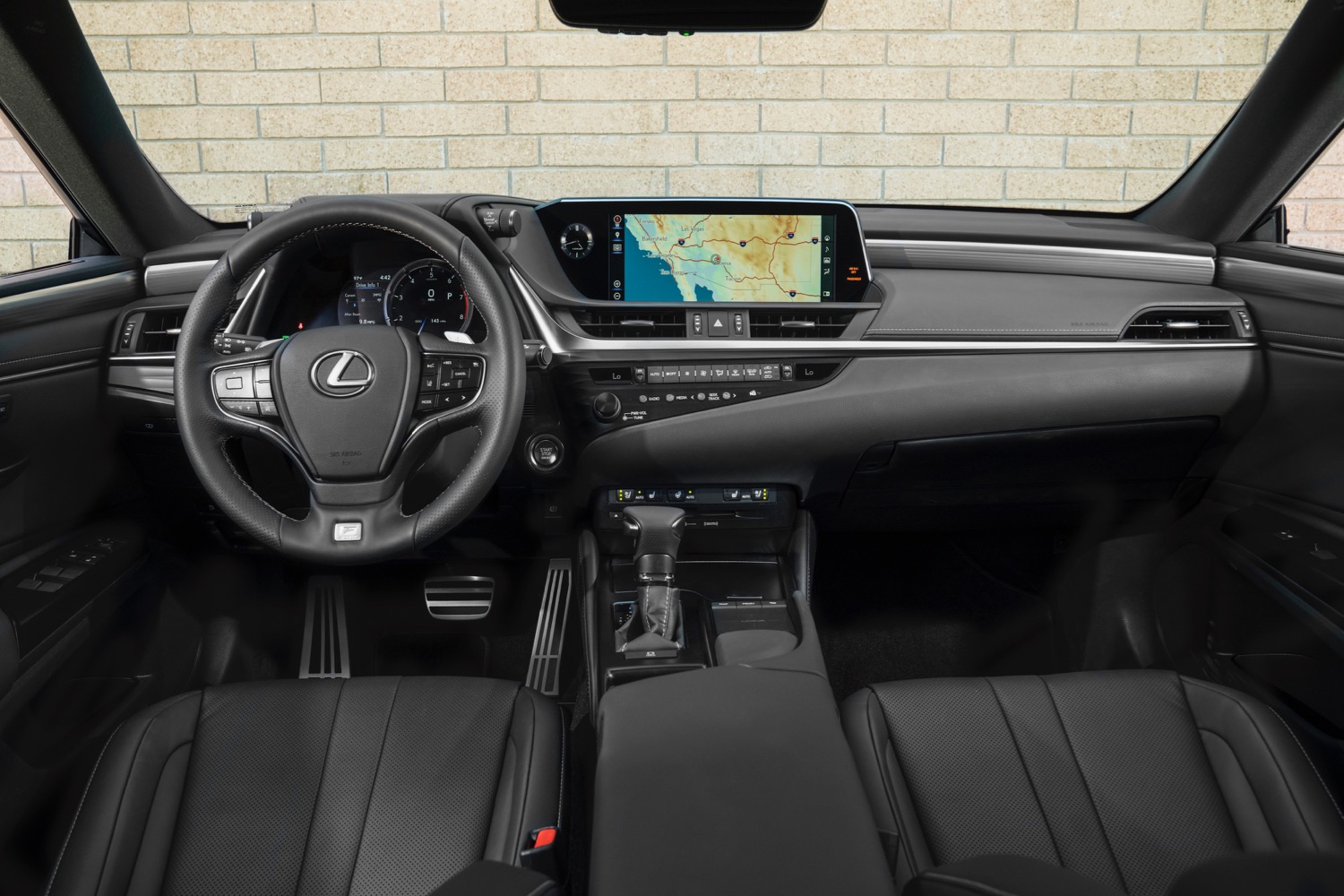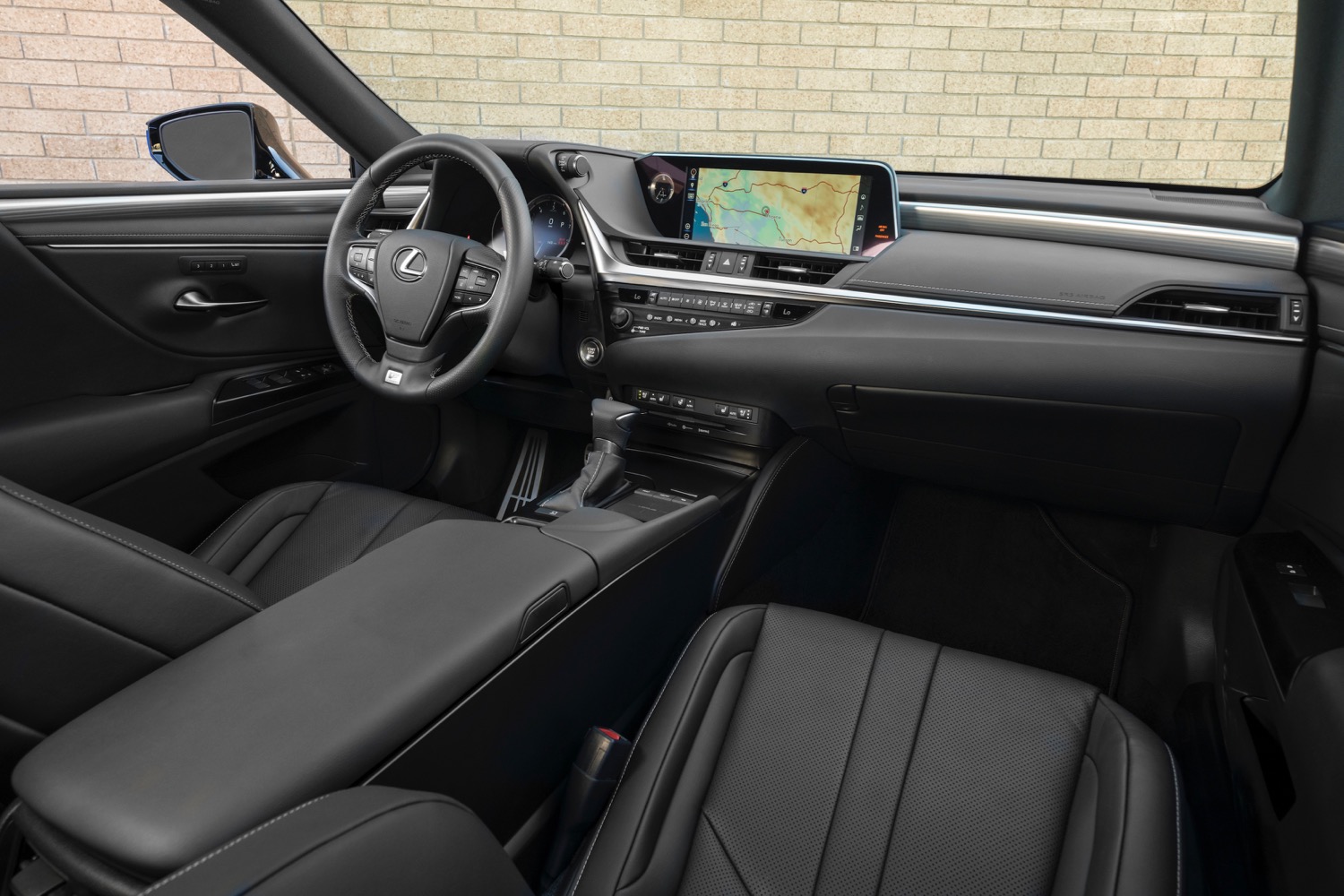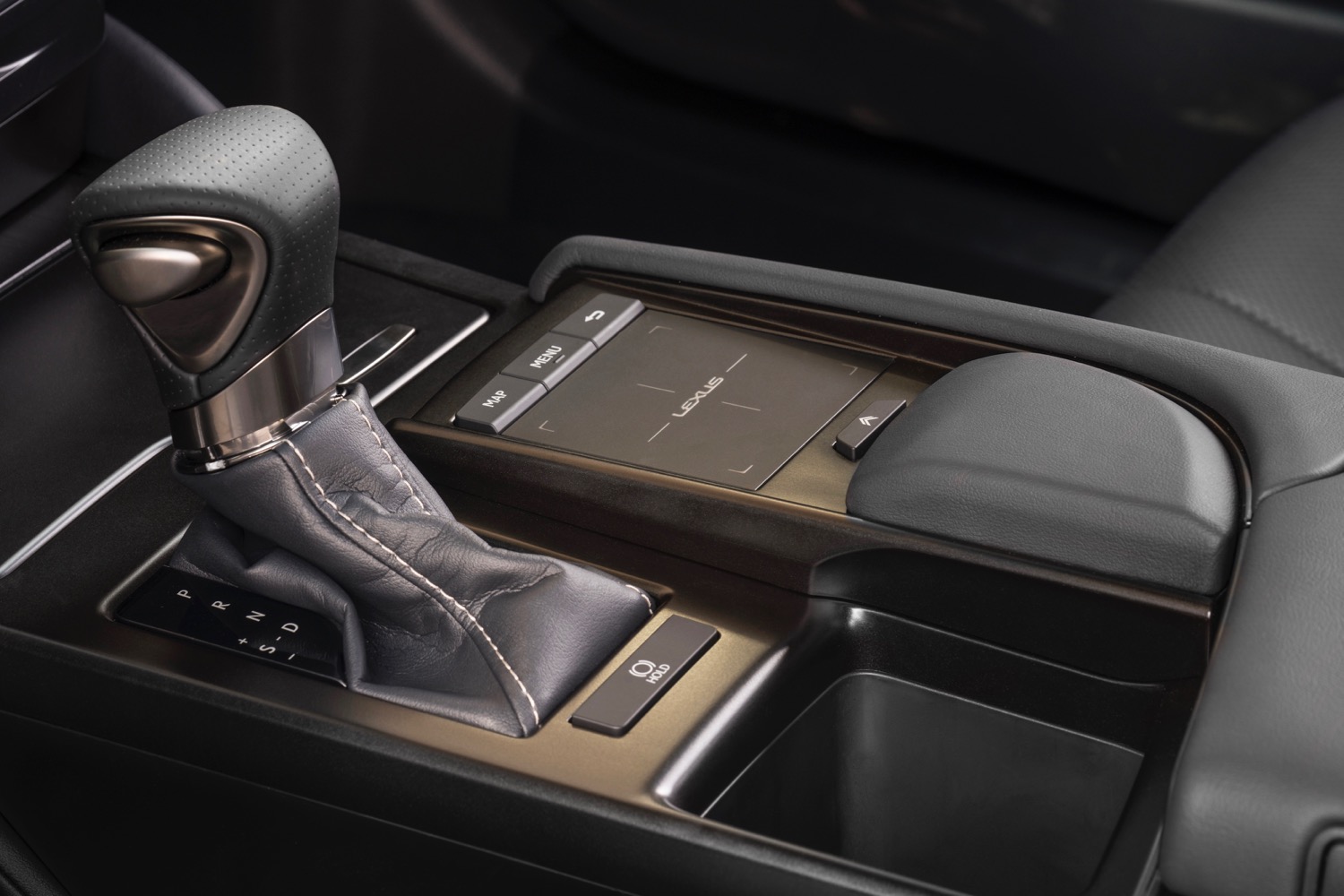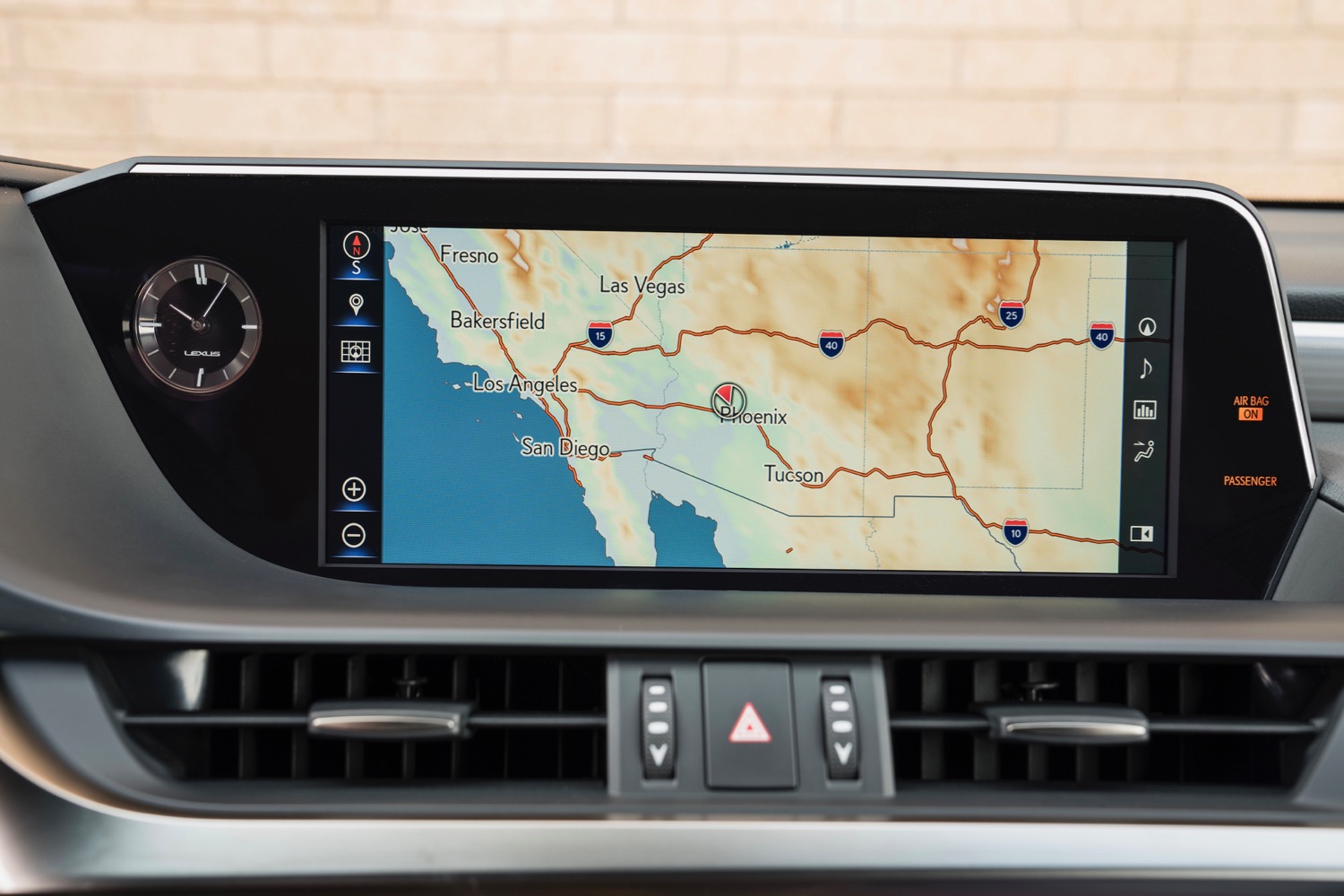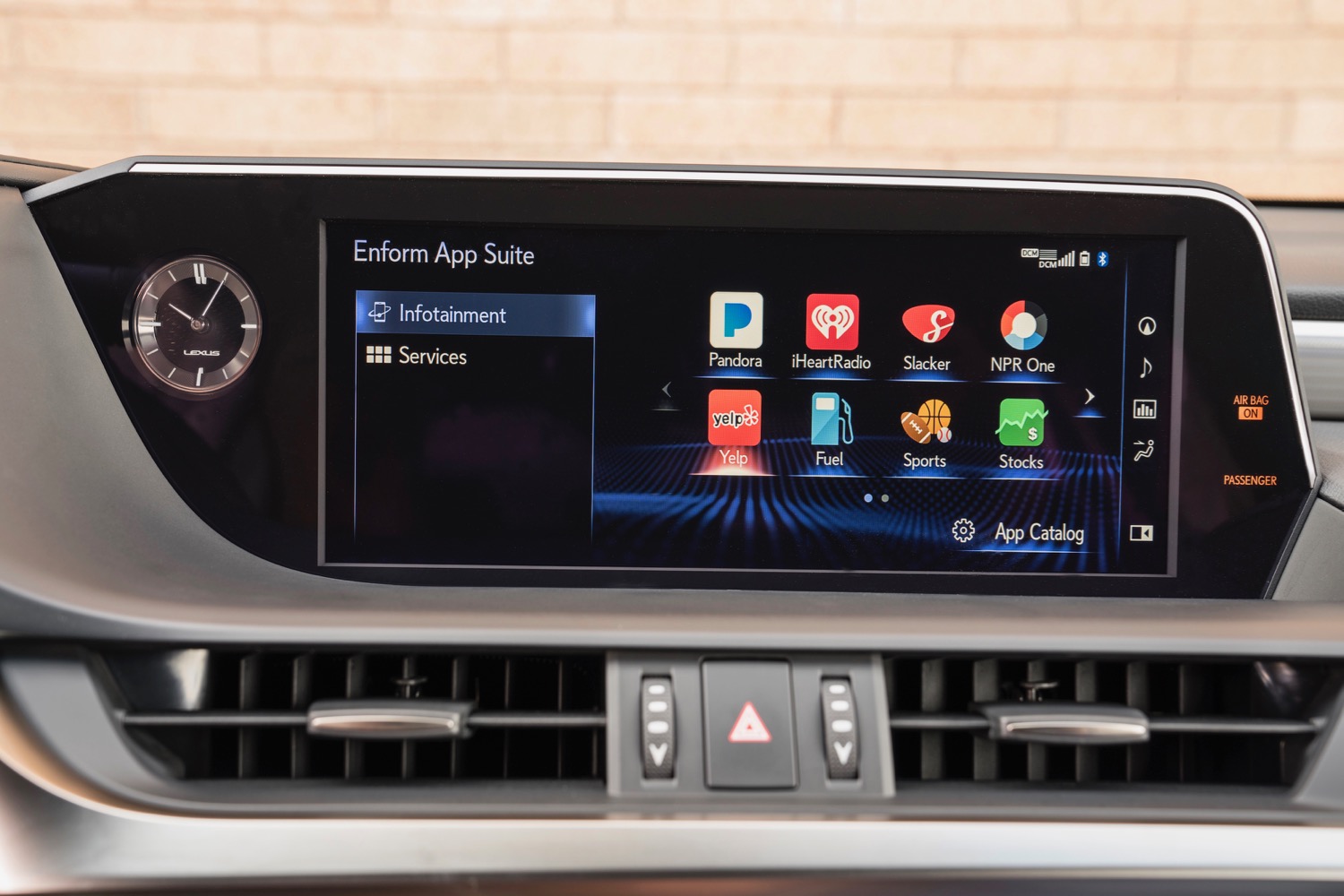The current sixth-generation Lexus ES, the company’s venerable and hugely popular front-wheel drive luxury sedan, just turned six this year. Within the automotive genus, specifically the passenger car species, that is getting quite old, so it’s time for a next-generation replacement. That replacement debuted at the 2018 Beijing Auto Show, and will go on sale in the United States in September.
The 2019 Lexus ES aims to be a more exciting package than its predecessors, something that’s apparent at first glance. The ES features Lexus’ massive “spindle grille” and a host of aggressive-looking styling details, making it look like a smaller version of the brand’s LS flagship. The ES is also longer, lower, and wider than before, with a wider track and wheels pushed further to the corners of the body. In other words, Lexus employed every trick that designers typically use to make a car look sportier.
Underneath the new bodywork sits a new platform called Global Architecture-K (GA-K). While Lexus would not say so explicitly, GA-K is likely derived from the Toyota New Global Architecture platform that underpins the Camry and Avalon. While the ES remains front-wheel drive, Lexus claims the new chassis is much more rigid than before, and engineers emphasized performance (gasp!) when tuning the chassis. The ES also gets an F Sport performance package for the first time, including adaptive dampers and a driver-selectable “Sport+” mode.
The 2019 ES will be offered in ES 350 and ES 300h hybrid guises. The ES 350 uses a 3.5-liter V6 that develops 302 horsepower and 267 pound-feet of torque (increases of 34 hp and 19 lb-ft), and is mated to an eight-speed automatic transmission. The ES 300h teams a 2.5-liter Atkinson-cycle four-cylinder engine and Toyota’s ubiquitous hybrid tech, delivering total system output of 215 hp and a claimed 44 mpg combined.
Lexus parent Toyota has been hesitant to embrace Apple CarPlay, but it’s finally caving in with the 2019 ES. In addition to being the first Lexus model to get CarPlay (sorry, Android Auto users), the ES will be available with Amazon Alexa connectivity and onboard Wi-Fi from Verizon. Models equipped with navigation get a 12.3-inch touchscreen, while other models get an 8.0-inch screen without touch sensitivity, forcing drivers to rely on Lexus’ unwieldy Remote Touch Interface trackpad.
The new ES will come standard with Lexus Safety System+ 2.0, which bundles multiple driver-assist features. Full details will be revealed closer to launch, but one of those features will be an upgraded version of the currently available pre-collision system, which detects obstacles in front of the car and can apply the brakes if it determines that a collision is inevitable. In the 2019 ES, Lexus says the system will be able to detect cyclists, and will be better at spotting pedestrians at night thanks to upgraded radar.
The 2019 Lexus ES goes on sale in the U.S. in September. Pricing information will be released closer to the launch date.
Update: Added details, specs, and photos from the debut of the Lexus ES at the 2018 Beijing Auto Show.
Editors' Recommendations
- Lexus unveils its first electric car, but it’s unlikely to be sold in the U.S.
- Lexus did the obvious thing and chopped the top off its flagship LC
- Everything to get excited about at 2019 LA Auto Show
- Mercedes-Benz will introduce something electric at the 2019 Frankfurt show
- The first fully electric Lexus production car may not go after Tesla
